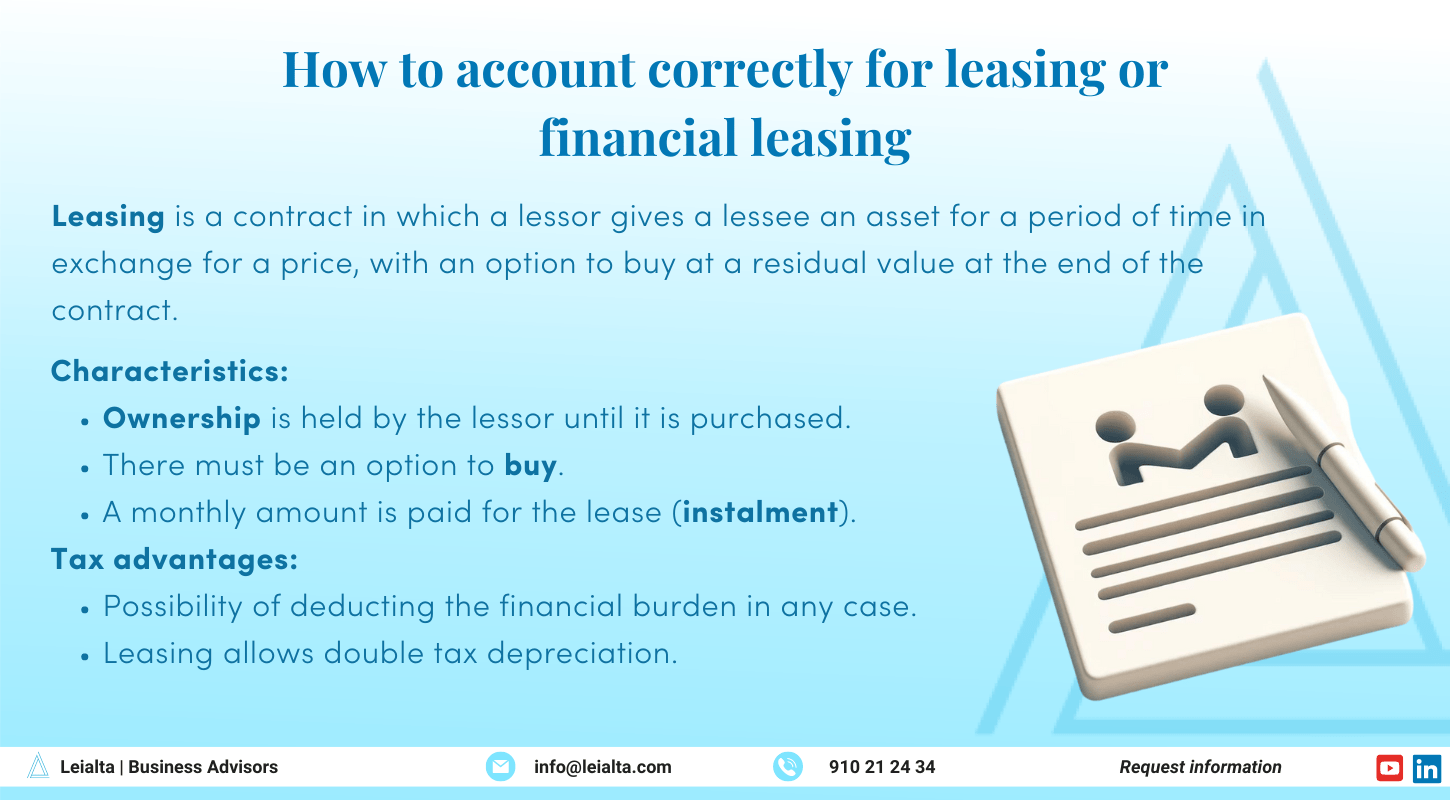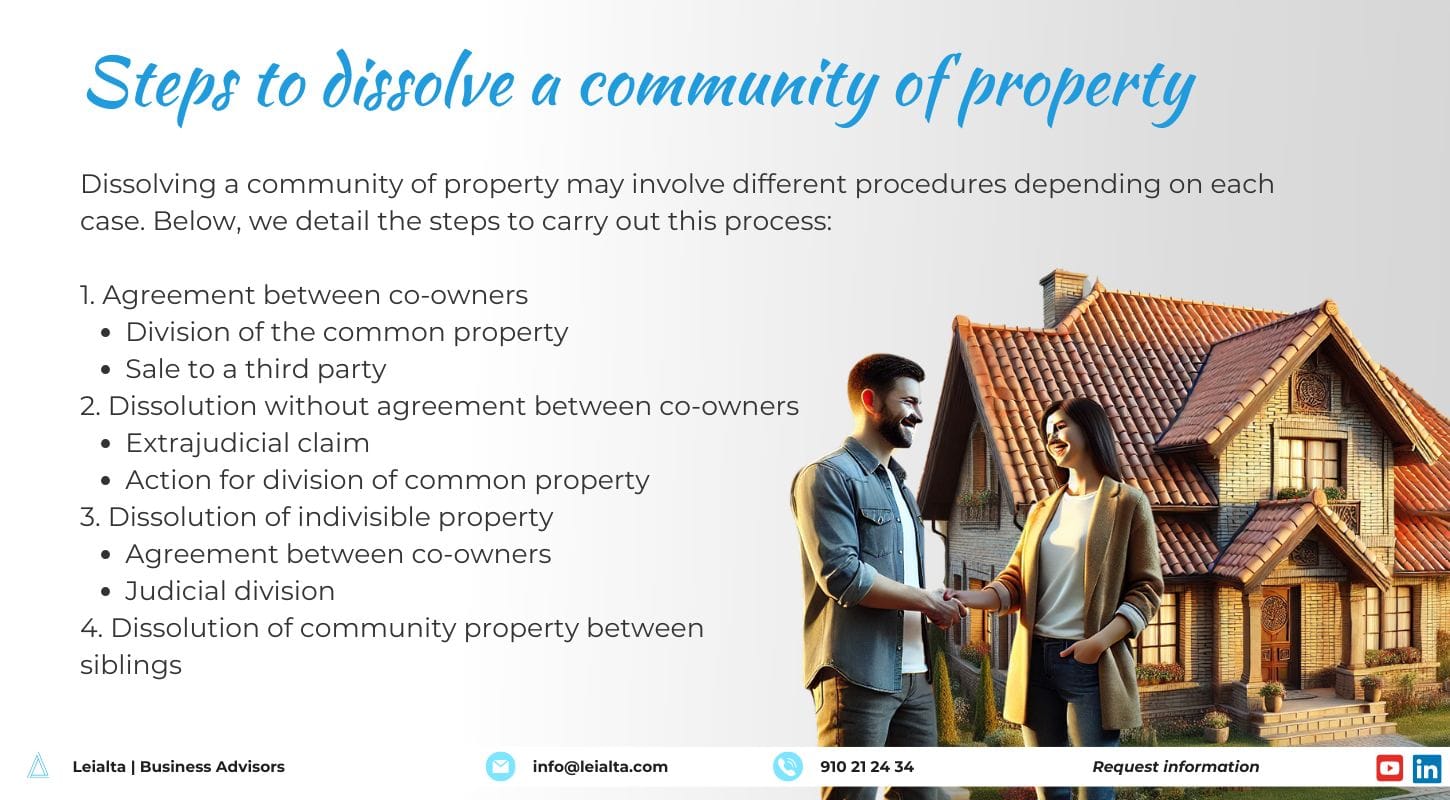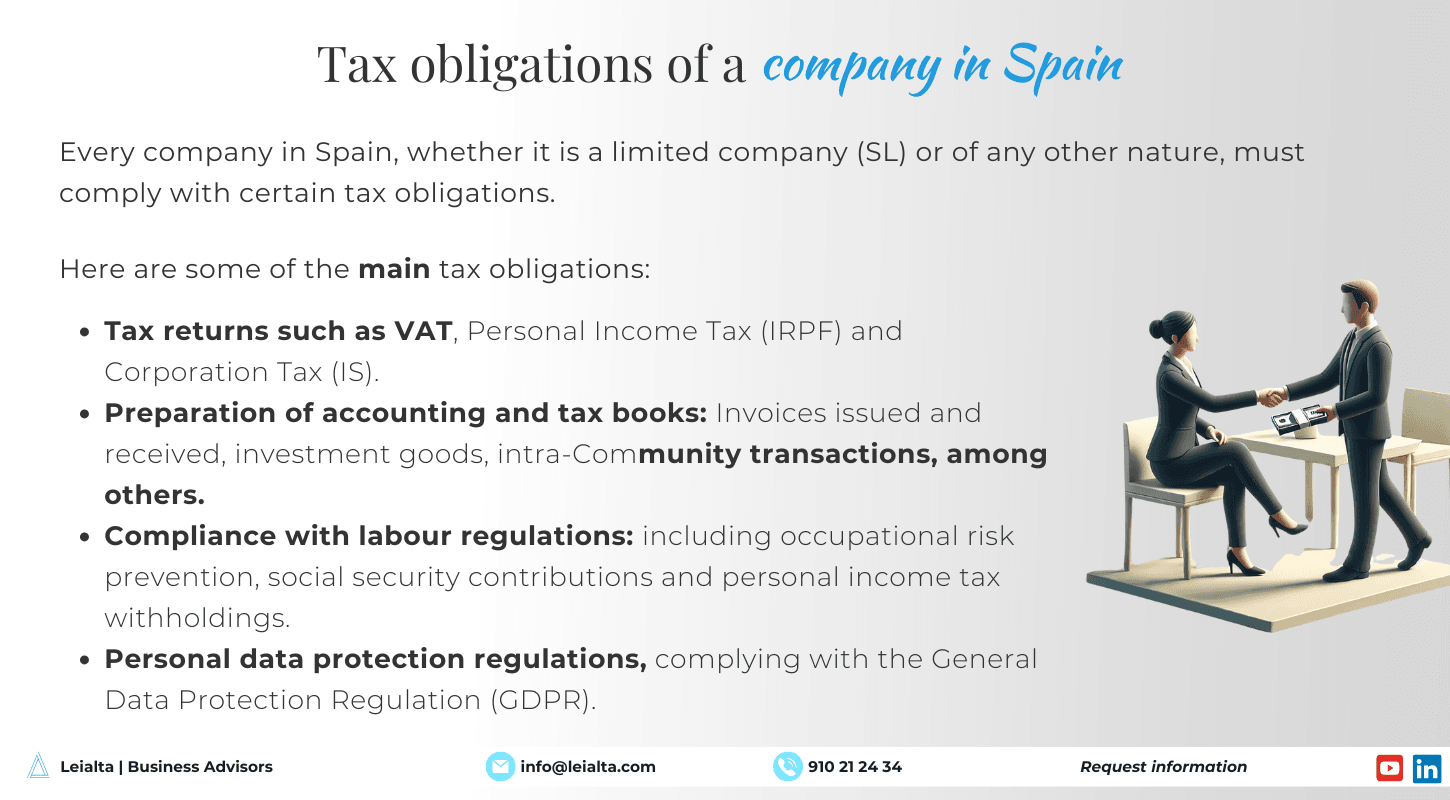
Leasing is a figure widely used by companies. For example, a company in the logistics sector may sign a financial lease to obtain a vehicle to be used for distribution. This type of operation must be thoroughly understood in order to account for leasing correctly. Here is how to do it.
What is a leasing?
Index of contents
Leasing is a contract signed by two parties, the lessor and the lessee, in which the lessor, who is the owner of an asset, gives a third party (lessee) the possibility to use the asset for a certain period of time in exchange for a price. At the end of the contract, the lessee has the possibility of acquiring an asset for a residual value by exercising the purchase option.
The characteristics of leasing are as follows:
- The ownership of the good remains with the lessor until the purchase option is executed.
- There must be a purchase option in favour of the lessee.
- A monthly amount is paid for the lease (instalment).
- The contract must state:
- The amount and number of instalments to be paid.
- The interest on the financing.
- The VAT of the operation.
- The purchase option.
- The goods to be leased.
- The identification details of the lessor and lessee.
How is a financial lease accounted for?
To better understand how to account for leasing correctly, let’s start with an example:
Let us assume that a logistics company in Spain signs a leasing contract for 1 vehicle with a total value of € 30,000 with a duration of 2 years (24 months), with an interest rate of 6.5% and a residual value equivalent to 1 monthly payment.
The transaction is recorded as a finance lease as the present value of the minimum payments coincides with the fair value of the asset in the transaction. The purchase option has been included in the minimum payments since, given its amount, there is no reasonable doubt that it will be exercised.
| Capital | Interest | Fee excluding VAT | VAT | Fee including VAT | |
| Year 1 | 13.895,01 | 1.457,73 | 15.352,74 | 3.224,08 | 18.576,82 |
| Year 2 | 14.825,59 | 527,15 | 15.352,74 | 3.224,08 | 18.576,82 |
| Purchase option | 1.279,40 | 0,00 | 1.279,40 | 268,67 | 1.548,07 |
| Total | 30.000,00 |
The transaction is recorded as a finance lease since the present value of the minimum payments coincides with the fair value of the asset in the transaction. The purchase option has been included in the minimum payments since, given its amount, there is no reasonable doubt that it will be exercised.
In accounting for this lease, the accounting entries would be as follows:
1.- Upon signing the contract:
| Debit | Credit | ||||
| 30.000,00 | 281 | Vehicle | 174 | Long-term Leasing Debt | 16.104,99 |
| 524 | Short-term Leasing Debt | 13.895,01 | |||
2.- For the payment of the first year’s fees
| Debit | Credit | ||||
| 13.895,01 | 524 | Short-term Leasing Debt | 572 | Banks | 18.576,82 |
| 1.457,73 | 662 | Leasing interests | |||
| 3.224,08 | 472 | Supported VAT | |||
3.- For the first year’s amortization charge:
| Debit | Credit | ||||
| 15.000,00 | 681 | Amortization Expense | 281 | Accumulated Amortization | 15.000,00 |
4.- For the reclassification of debt from long-term to short-term:
| Debit | Credit | ||||
| 14.825,59 | 174 | Long-term Leasing Debt | 524 | Short-term Leasing Debt | 14.825,59 |
5.- In the second year:
| Debit | Credit | ||||
| 14.825,59 | 524 | Short-term Leasing Debt | 572 | Banks | 18.576,82 |
| 527,15 | 662 | Leasing interests | |||
| 3.224,08 | 472 | Supported VAT | |||
| Debit | Credit | ||||
| 15.000,00 | 681 | Amortization Expense | 281 | Accumulated Amortization | 15.000,00 |
| Debit | Credit | ||||
| 1.279,40 | 174 | Long-term Leasing Debt | 524 | Short-term Leasing Debt | 1.279,40 |
6.- When exercising the purchase option:
| Debit | Credit | ||||
| 1.279,40 | 524 | Short-term Leasing Debt | 572 | Banks | 1.584,07 |
| 268,67 | 472 | Supported VAT | |||
How is a financial lease deductible?
Article 106 of the Corporate Income Tax Law 27/2014 establishes a series of requirements for the transaction to be considered a financial lease and obtain tax benefits. The requirements are as follows:
- The lessor must be a credit institution or a financial credit establishment.
- The minimum duration of the contract is 2 years in the case of movable goods and 10 years in the case of real estate or industrial establishments.
- The contract must establish the instalments, differentiating between the part corresponding to the recovery of the cost of the goods and the financial burden, in addition to the corresponding indirect levy.
- The annual amount of the instalments shall remain the same or may increase during the course of the contract.
Tax advantages from tax deductibility of a financial lease:
The tax advantages of the transaction are as follows:
- On the one hand, the possibility of deducting the financial burden in any case.
- On the other hand, leasing makes it possible to double the tax depreciation of the asset acquired through this formula and shown as fixed assets in the lessee’s assets, and even triple it in the case of small companies. In this way, it is possible to anticipate the recognition of the expense for tax purposes by making negative adjustments to the accounting result until the tax depreciation of the asset is complete and, subsequently, positive adjustments to be made when the asset has been depreciated for tax purposes, but not for accounting purposes, thus achieving a deferral of the tax burden.
In short, leasing accounting requires a high level of knowledge of accounting and tax regulations. If you need help to correctly account for a leasing or financial lease, do not hesitate to contact our team of experts in business consultancy so that they can study your case and indicate the steps to be taken.



